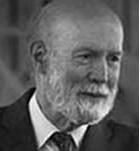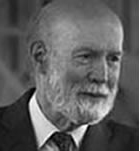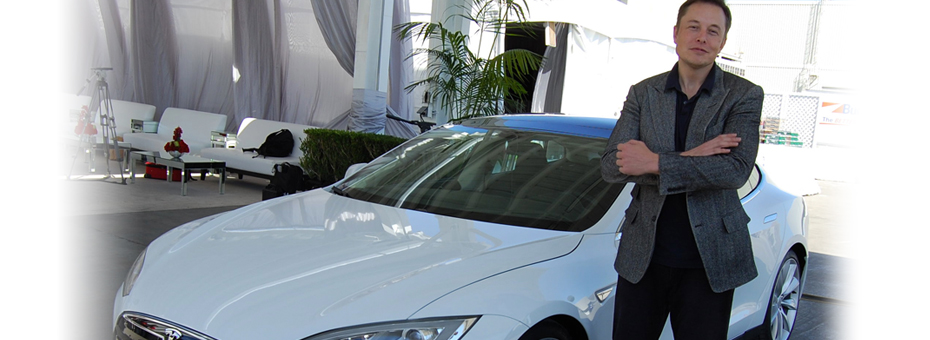Photo courtesy of Maurizio Pesce from Milan, Italia – Elon Musk, Tesla Factory, Fremont (CA, USA)
Given the ever-increasing barriers to entry in what Peter Drucker famously called the “industry of industries,” it’s a wonder that any automotive startups defy the long arc of consolidation by establishing themselves as viable competitors. And it’s even more notable when these newcomers present a model that just might challenge the incumbents to the core. Lean thinker Mark Donovan recently asked LEI founder Jim Womack whether the path taken by Tesla founder Elon Musk points to a new machine that can change the world.
Mark Donovan: Is something seismic happening here?
 Tesla, one of Elon Musk’s three major companies, just booked close to $14 billion in deposit-backed advance sales in under three weeks through the unprecedented direct-to-consumer launch of the $35,000 Model 3.
Tesla, one of Elon Musk’s three major companies, just booked close to $14 billion in deposit-backed advance sales in under three weeks through the unprecedented direct-to-consumer launch of the $35,000 Model 3.
Many are calling this car the Model T of our time, a breakthrough new vehicle that will mark the start of a worldwide shift to clean and safe electric transportation. In the meantime his other company, SpaceX, landed the Falcon 9 stage-one rocket on a drone ship in the Atlantic Ocean as proof of concept that it can cut the cost of space travel by at least 30 percent with reusable rockets.
Then there is the Gigafactory in Nevada from Tesla’s energy division, which, once operational, will produce more lithium ion batteries than all other lithium ion battery factories in the world combined, at significantly lower cost and greater efficiency. Not only will these batteries power all of their amazing electric vehicles (EVs), but they will also revolutionize the energy industry with storage solutions that allow energy production to be truly level-loaded, among other things. As a not-so-small side note, SolarCity has become the leading installer of solar panels in the U.S. and is revolutionizing the way we generate power. Most of this is done in-house on U.S. soil at a time when more companies than not are choosing to outsource and offshore their production. Can we all agree that something seismic is happening that deserves close scrutiny?
At the recent Lean Transformation Summit I asked Jim Womack what he thought of my hero Elon Musk. Jim said that either we should be studying him much more closely or that he could be about to walk off a cliff. This was prior to the two major events I mentioned above. I am now deeply convinced that it is the former, and that something truly amazing is taking place that is worthy of our close attention.
Clearly Musk is a brilliant thinker and an exceptional executor; yet I think there is something much more profound happening than just a great leader driving three world-changing companies. I believe Musk is showing us a new way to be successful and sustainable in the 21st century.
I see strong parallels to what Womack saw in Toyota in the 80s. The breakthrough results appeared before anybody really understood how they were being accomplished. Then, with close study, Womack and his team dissected and discerned a set of principles and behaviors driving these advances and delivered to the world a blueprint for success in the 20th century with The Machine that Changed the World, a call for action that we have all largely failed to execute. Sorry Jim, it is not for lack of trying, but most of us seem to be missing something, or more likely, a number of somethings.
All of Musk’s companies are founded upon exceptionally inspirational purposes…
- Tesla: To accelerate the advent of sustainable transport by bringing compelling mass market electric cars to market as soon as possible.
- SpaceX: To revolutionize space technology with the ultimate goal of enabling people to live on other planets.
- SolarCity: To accelerate the mass adoption of clean energy.
Each creates a sense of great urgency and “ludicrously” high expectations. The earth is the burning platform, quite literally. Saving the planet and the human race is a pretty compelling call to action.
Next, they innovate based upon first principles thinking. Musk states “I think it’s important to reason from first principles rather than by analogy. The normal way we conduct our lives is we reason by analogy. [With analogy] we are doing this because it’s like something else that was done, or it is like what other people are doing. [With first principles] you boil things down to the most fundamental truths…and then reason up from there.” They have demonstrated this not just with their “product” innovation but also with functions such as their innovative approach to sales and marketing.
Finally, they have engaged the entire planet to contribute to their mission by openly sharing all their patents freely (what a gift to society) and allowing customers to promote the brands.
These things allow them to attract and inspire the best talent in the world and create virtuous cycles of success. Could it be a simple as all that? Probably not, but I think we should try to better understand what they are doing and how we can learn from it. I bet Musk would be very happy to share The Tesla Way with the world. Dr. Womack?
_______________________________________________________________________________________
Jim Womack: Is there a complete business system fueling The Tesla Way?
 Let me take this from the other direction, asking how Toyota would have pursued Musk’s “first principles.” (Hence the “Tesla Way versus the Toyota Way” of the title.) They were also a start-up (from the late 1930s but not in volume production until the late 1940s due to the war), facing choices in pursuing its first principle of providing the best transportation possible for consumers of modest means in a war-ravaged country where hardly anyone had a car.
Let me take this from the other direction, asking how Toyota would have pursued Musk’s “first principles.” (Hence the “Tesla Way versus the Toyota Way” of the title.) They were also a start-up (from the late 1930s but not in volume production until the late 1940s due to the war), facing choices in pursuing its first principle of providing the best transportation possible for consumers of modest means in a war-ravaged country where hardly anyone had a car.
Toyota could have done this by copying foreign practices in product development, production, etc. and (like Nissan) even making foreign designs on license. That would have been the way to go fast, and Nissan jumped out to a big lead in market share in Japan by using this strategy. Instead Toyota decided to go slow and to innovate as a business enterprise before it innovated with products. (This really began in 1950 when they believed their sales forecast, built ahead of the market, ran out of cash, and fell into the hands of Japanese bankers who broke the company in two to create Toyota Motor Sales and Toyota Motors.)
By 1965 Toyota had fully elaborated its new production, product development, supplier partnership, sales and customer support, and general management systems, the latter focused on developing capability in every employee. They had also created an enterprise that was stable and that could tackle new challenges from solid base.(Taiichi Ohno’s production system is widely known in this regard but Kenya Nakamura (product development), Shotaro Kamiya (the sales system), and, above all, Eiji Toyoda (the management system) contributed much more.
In addition, by 1965 Toyota had learned how to compress lead times in product development and production so it could grow almost entirely with internally generated cash. This meant never having to rely on banks again and retaining more than 50 percent of the shares within the Toyota Group so that Wall Street raiders weren’t a concern either.)
By 1966, Toyota was ready to go as a volume player, one competing on much more than low wages. And the Corolla was launched then as Toyota’s first international product. What followed was rapid growth (facilitated by brilliant production-system design methods) across the world and in an ever-growing range of products.
By the mid-1990s (after Lexus was successfully launched) Toyota was finally ready to innovate with products. (After only 40 years!) The first was the Prius (when no one else believed this technology had promise), whose most interesting characteristic was that it was launched on time and actually worked exactly as promised with no quality or reliability problems. Only later did it turn out that Toyota could grow its market share and make money with Prius technology. (These objectives were not part of the original plan, which was to make a mass market vehicle that could dramatically reduce the consumption of carbon fuels and burnish Toyota’s image as a technology company without losing much money in the process.)
The next innovation was hardly what the world would call innovative: offer Prius-proven hybrid technology all the way across the Toyota product range while reducing the cost of the technology by 30 percent, so Toyota could also make a good margin. But the results are pretty impressive: eight million Toyota hybrids on the world’s roads to date as Toyota has made record profits.
Toyota’s next product innovation was the Mirai fuel cell vehicle, just launched after decades of development. Does this make any sense? Not according to Elon Musk, who coined the term “fool cells.” But, no one thought the hybrid technology had potential either (any more than they thought a high-performance, long-range electric vehicle made sense) and we are just at the start of the race to see who is right. (I have no odds to offer. Innovation is inherently risky and winners are hard to forecast.)
So, what’s my take on the Tesla Way, as an advocate of the Toyota Way? Like Mark, I love Musk’s first principles. But I worry about the business system supporting them. Tesla is in its 14th year as a car company, which is a long time in Musk years. Yet it’s hard to see how its product development system (always years late, with rework to do post-launch), the production system (with spotty quality and unknown amounts of rework and warranty claims), the supplier management system (with an inability to forecast demand to suppliers), the customer support system (which is still to be created for a mass market), and the general management system (which seems to wear people out at a remarkable rate, rather than build capability in every employee) have matured to a point where they equal to the challenge of marketing 500,000 vehicles in 2018 and one million in 2020. Wouldn’t it seem reasonable to expect some stability by this point?
The Tesla Way is to go fast (“Let’s try ludicrous mode!”) and hope that genius and adrenaline can compensate for the lack of planning and stability. But I would advise going slower and getting the job done right the first time in accord with the Toyota Way. We will see.
_______________________________________________________________________________________
Mark: How about pairing Toyota execution with Tesla First Principles?
 Jim, it seems we want the Toyota/Tesla Way…Toyota’s world class execution with Musk’s first principle innovation at a “ludicrous” pace. Am I completely off my rocker to think a Tesla/Toyota partnership is possible for this ramp? They don’t need to get into bed together forever, however, they do each have something the other needs right now in order to achieve his stated mission.
Jim, it seems we want the Toyota/Tesla Way…Toyota’s world class execution with Musk’s first principle innovation at a “ludicrous” pace. Am I completely off my rocker to think a Tesla/Toyota partnership is possible for this ramp? They don’t need to get into bed together forever, however, they do each have something the other needs right now in order to achieve his stated mission.
Tesla has built an EV in a class of its own that fulfills Toyota’s Global Vision and which the market is ready for TODAY. Toyota has the Toyota Production System, which in my opinion is the only production platform in the world capable of ramping this up at a Musk pace. It wouldn’t be business as usual for Toyota or Tesla. They would each have to swallow a bit of pride and accept that the other offers something that would take them years, if not decades, to develop on their own.
Together, today they are stronger, faster and better. I don’t imagine this would be so difficult for them to accept. The “burning platform” requires no less than the speed that Musk demands. Does it not justify a bit of extra urgency even at the cost of some burned-out people or disgruntled vendors? Better if this can be avoided but do we really have that luxury today? We are at war with climate change whether or not we admit it. If it is actually possible to get 500,000 Model 3s to market by the end of 2018 one might argue there are some ethical issues related to not doing it.
If there are two companies in the world that I would bet could rise to this challenge they are certainly Tesla and Toyota. How apropros that all of this is happening at NUMMI. Let’s dream big just like Elon and get it done on time like Toyota!
_______________________________________________________________________________________
Jim: Let’s continue to show respect and learn from one another
 The Toyota/Tesla Way sounds like a great idea. But…not in one company. Toyota and Tesla have already learned about each other from Toyota’s brief investment in Tesla and their project to produce an all-electric Toyota RAV4. And they decided to admire each other from a distance. The most practical way forward is for Toyota to be bolder in pursuing first principles and for Tesla to be less ludicrous, showing respect for each other as they share the road.
The Toyota/Tesla Way sounds like a great idea. But…not in one company. Toyota and Tesla have already learned about each other from Toyota’s brief investment in Tesla and their project to produce an all-electric Toyota RAV4. And they decided to admire each other from a distance. The most practical way forward is for Toyota to be bolder in pursuing first principles and for Tesla to be less ludicrous, showing respect for each other as they share the road.




